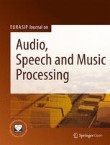Music expression with a robot manipulator used as a bidirectional tangible interface
The availability of haptic interfaces in music content processing offers interesting possibilities of performer-instrument interaction for musical expression. These new musical instruments can precisely modulate ...
